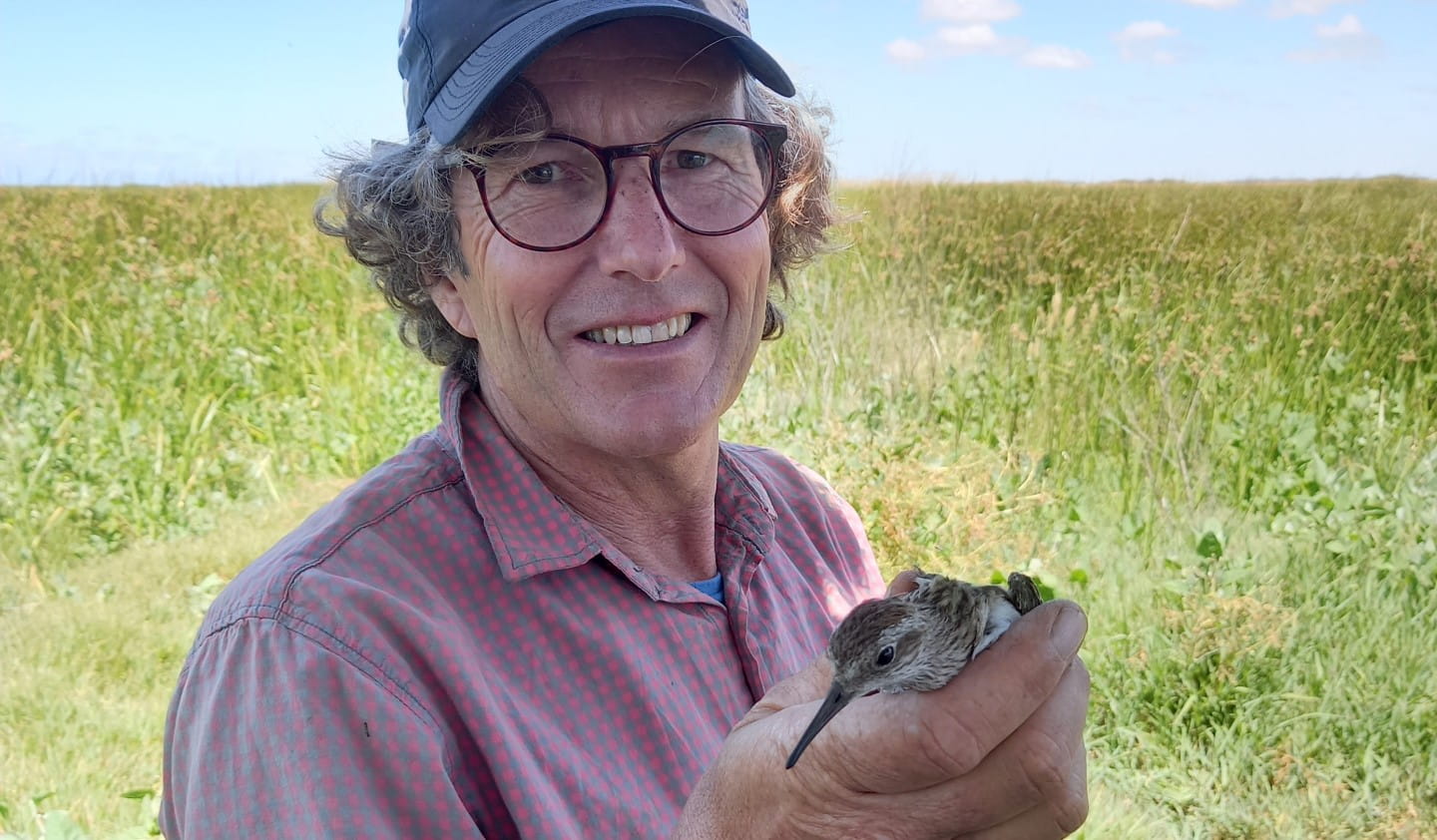The citizen science volunteers who are making a difference in shorebird conservation
Wednesday 8 May, 2024
Every year, huge flocks of shorebirds fly tens of thousands of kilometers from the cold northern reaches of Siberia to spend the summer holidaying in Australia before returning north once more, along one of the world’s longest migratory routes, the East Asian-Australasian Flyway.
Once these migratory birds arrive in Victoria, they’re met by a team of dedicated citizen science volunteers from the Victorian Wader Study Group who have been carefully collecting key bits of information on these impressive birds for nearly half a century.
Steve Atkinson is the chair of the Victorian Wader Study Group and has been volunteering with the group for nearly 30 years doing what he calls “extreme birdwatching”.
“It’s the only way to get to really know shorebirds, as when we see them here they’re in their non-breeding plumage, and it can be hard trying to figure out which bird is which when they’re all sort of uniformly grey,” Steve said.
“But if you’re there, and you’ve got one in your hands and you’ve got a group of experts sitting around you, that’s when you can actually learn what’s what.”

VWSG volunteers prepare to furl the cannon net for use at a beach near Tooradin, Victoria. Westernport Bay is a hotspot for migratory shorebirds. Photo supplied by VWSG/Eric Miller.

Once the net has been deployed, volunteers from the VWSG carefully extract each bird before weighing, measuring and banding each one, recording and logging all of the gathered data. Photo supplied by VWSG/Richie Todd.

Volunteers from the Victorian Wader Study Group prepare to band a captured migratory bird. The group operates not just along Victoria's coastline, but parts of Tasmania and South Australia, and even occasionally overseas as well. This picture shows volunteers from the VWSG working in the USA. Photo supplied by VWSG/Steve Atkinson.

The Victorian Wader Study Group is a volunteer organisation and welcomes anyone with an interest in birds and conservation. VWSG Chair Steve Atkinson says nearly "all our volunteers have learnt about all this on-the-go." Photo supplied by VWSG/Steve Atkinson.
The Victorian Wader Study Group, or VWSG for short, is a volunteer citizen science group that devotes it's time to catching, recording and tracking some of the 37 migratory shorebirds that visit Australia’s coastal and freshwater wetlands annually.
The group has been collecting data on different shorebirds and waders for close to 45 years, recording the size and weight of individual birds, fitting them with leg flags to help identify them, and even placing micro-tracking devices on some to gather more data about where they travel each year.
The Red-Necked Stint is the smallest of Australia’s migratory birds (weighing about as much as a Tim Tam) and is one of the species the VWSG tracks.
“The smaller the bird, the smaller the tracking device,” Steve said.
“For larger birds like Bar-Tailed Godwits we can use satellite trackers with a little solar panel that recharges the battery and broadcasts location data every few hours that we can view on a website.”
“But for small birds like the Red-Necked Stint the geolocator is so small it can only record daylight and time. From that data we can work out when sunrise and sunset is, and from that we can get the latitude and longitude, usually to within approximately 40km of where the bird has been.”
“The data is stored on the geolocator, and we can only retrieve it by catching the same bird again the following year. It’s amazing the amount of information that has been pulled out of the data we’ve collected, particularly when researchers have more than 40 years of data to look over.”
Professor Marcel Klaassen from Deakin University is not only an expert on migratory birds, but he is also a member of the VWSG himself. Professor Klaassen said the group has been “instrumental” in helping with his research, and has credited the group as an institutional author in his academic papers.
“Citizen science groups like the Victorian Wader Study Group are crucial to academics and researchers. The sheer value of the time they put in would run into the millions of dollars, something which the vast majority of projects cannot afford,” Professor Klaassen said.
“The importance of the data the VWSG has collated is hard to overstate. It has records stretching back over 40 years, and by looking at that we can see the effects climate change has had on the size and scale of these species over time.”
“For example, we can see some species have adapted by growing larger heat exchangers, such as longer legs and bills,” Professor Klaassen said.

“We know what we’re doing is making an impact. We know that data we’ve collected has been used in arguments presented to the Chinese and South Korean governments to get them to change their land policies on intertidal mud flats where they’d been increasingly building on those areas and using them for industrial purposes.”
“We’ve helped convince them to do something about their legal obligations under these treaties. We are having an impact. A lot of volunteer groups must wonder whether they make a difference. Well for many years, so did we, but we're now seeing the recognition of our efforts and we're seeing the results of our efforts.”
Volunteering in nature with groups like the Victorian Wader Study Group is a rewarding experience and a great way to help conserve Victoria’s special places. There are hundreds of exciting volunteer opportunities across Victoria, regardless of your age, skill or ability.








